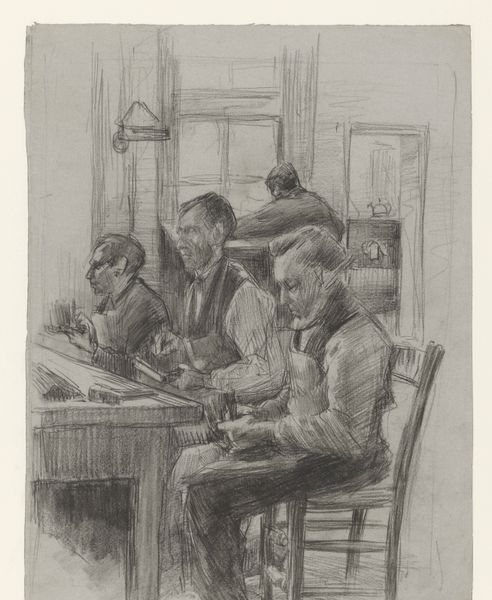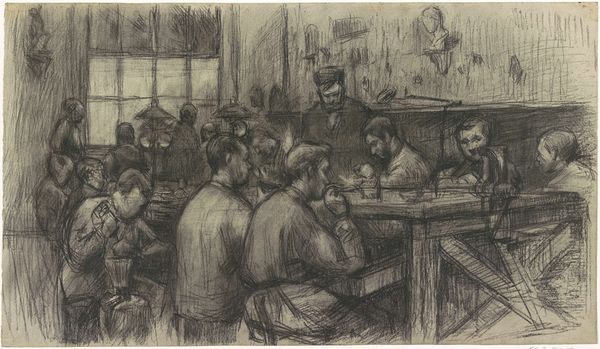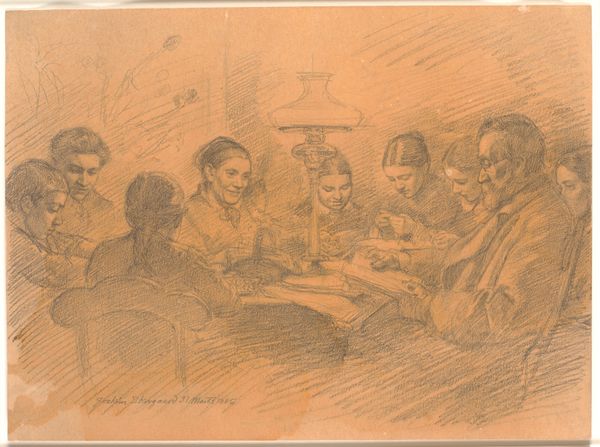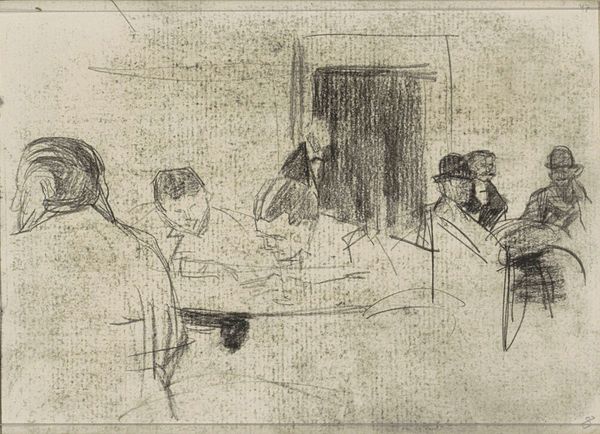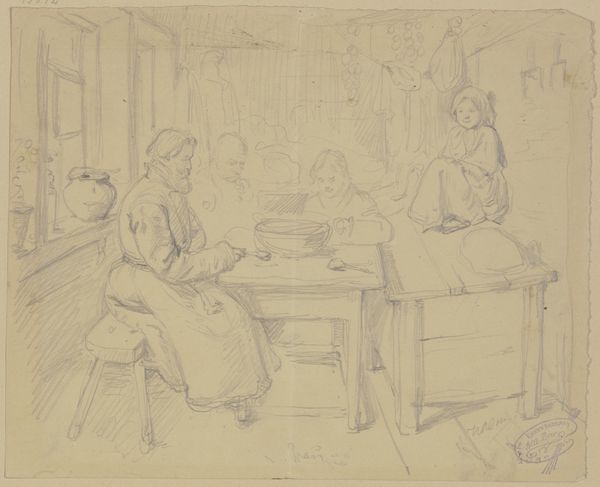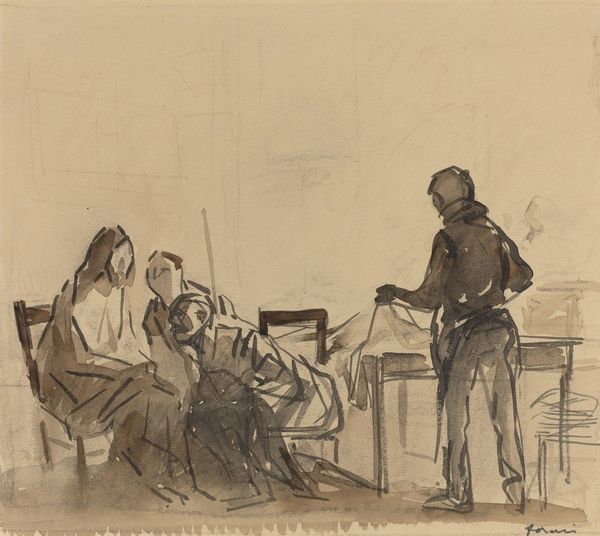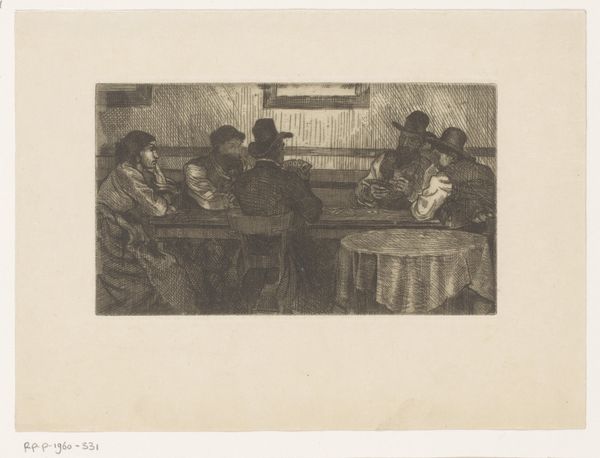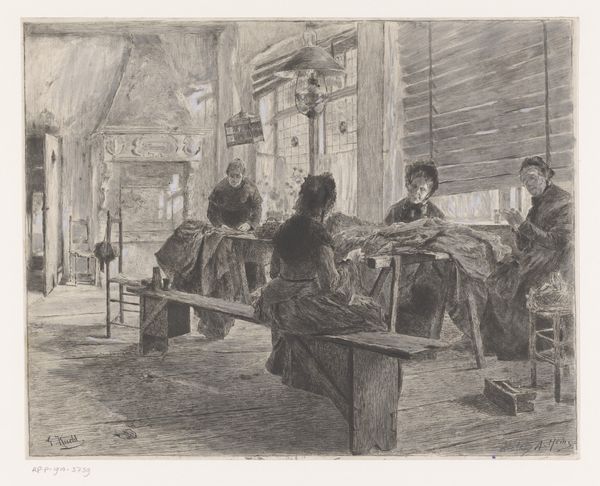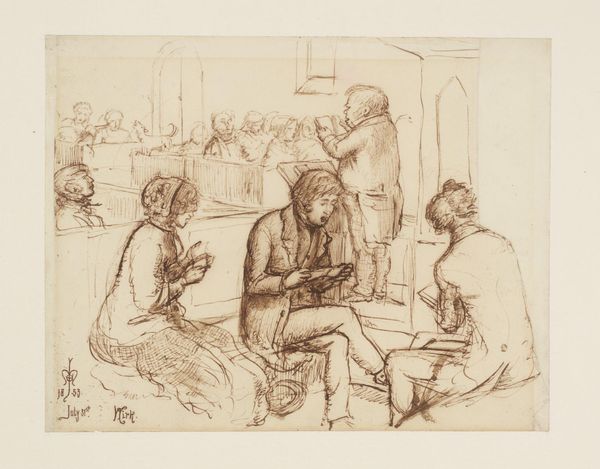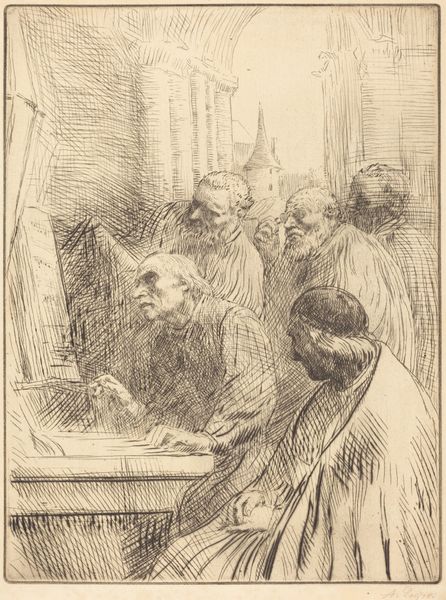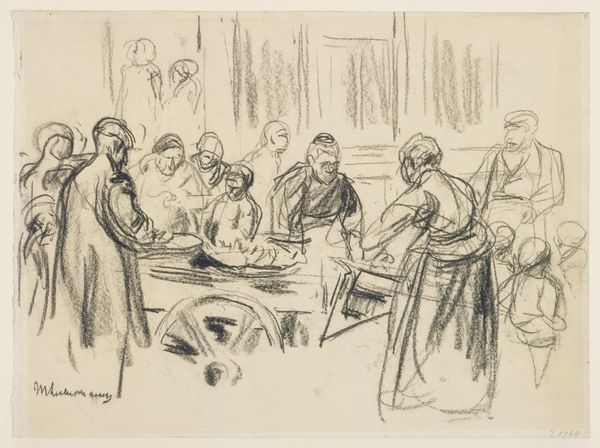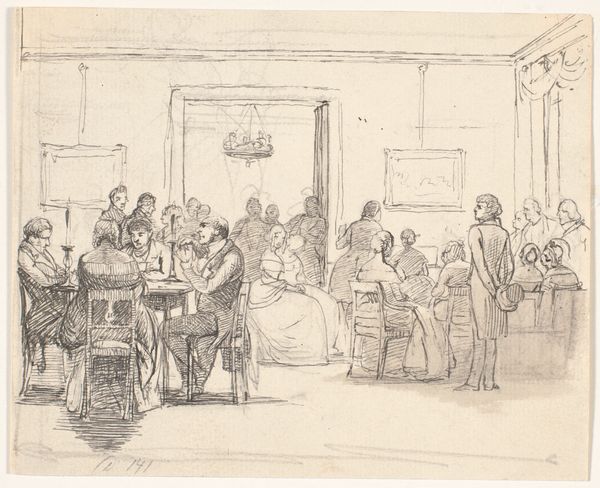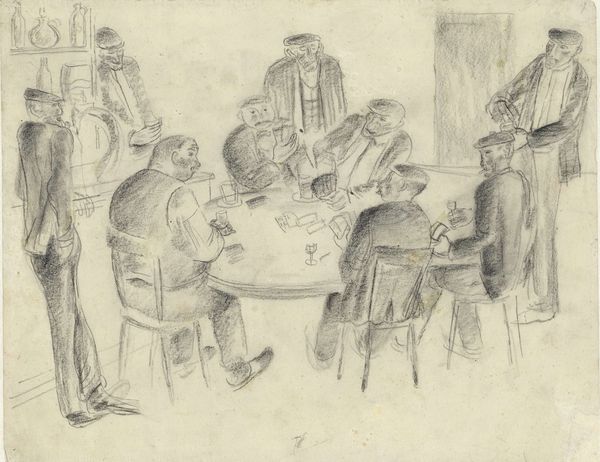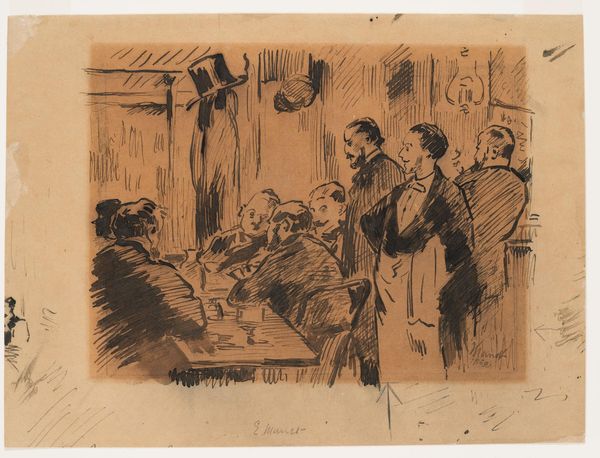
drawing, pencil, graphite
#
drawing
#
light pencil work
#
pencil sketch
#
personal sketchbook
#
idea generation sketch
#
sketchwork
#
pen-ink sketch
#
pencil
#
graphite
#
sketchbook drawing
#
pencil work
#
genre-painting
#
storyboard and sketchbook work
#
sketchbook art
#
realism
Dimensions: height 269 mm, width 367 mm
Copyright: Rijks Museum: Open Domain
Editor: This is "Zaal in een blindeninrichting," or "Room in a Blind Institution" by Anthon Gerhard Alexander van Rappard, created sometime between 1868 and 1892. It's a pencil drawing, and it strikes me as incredibly bleak, the light is so diffused. What historical context is informing this drawing? Curator: It's a powerful image, isn't it? Rappard, though often overshadowed by his friend Vincent van Gogh, offers a critical lens onto the social realities of his time. The late 19th century saw increasing, though often inadequate, institutionalization of marginalized populations. This drawing depicts the interior of a blind institution. Consider the institutional gaze—how were spaces like these perceived by the public, and how did that influence artistic depictions? Editor: So, Rappard isn’t just making an observational sketch, he’s commenting on something? Curator: Precisely. Think about who had access to art at the time, and who was typically represented. Rappard here, by showing this scene, challenges the traditional art world, forcing viewers to confront realities they might otherwise ignore. Do you notice any visual cues that suggest the purpose or daily life of this institution? Editor: Well, everyone's seated at these long tables with what looks like tools...and there's shoes discarded under one table. It suggests repetitive manual labor. It is interesting how the large windows contrast with the subject, they let light in, but this space remains dismal. Curator: Good observation! The light can symbolize many things here, can’t it? Perhaps a failed promise of enlightenment? These institutions often served as both places of refuge and sites of control. How does this drawing either affirm or challenge those notions? Editor: I guess it challenges it by portraying the lives within its walls with an unflinching realism. It's more complex than just showing pity or idealizing charity. Curator: Exactly. And Rappard’s choices – the medium, the composition, the subject itself – contribute to a larger dialogue about representation and social responsibility in art. He prompts us to ask, “Who are we not seeing?” Editor: I never thought a simple pencil drawing could hold so much meaning about social critique! I’ll definitely view Rappard, and art of that time, with a wider historical perspective now.
Comments
No comments
Be the first to comment and join the conversation on the ultimate creative platform.
